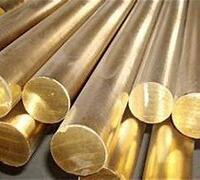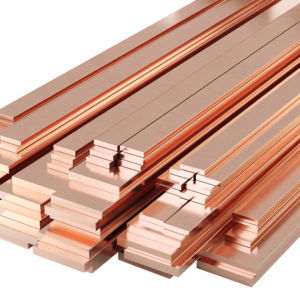1. Introduction
Just 24 hours ago, the London Metal Exchange reported a 3.2% surge in copper prices—the sharpest single-day jump in over six weeks—driven by renewed infrastructure spending in the U.S. and EU green energy initiatives. This spike directly impacts everything from copper rod price to copper strip price, making it more crucial than ever to understand the nuances between different copper products.

Whether you’re sourcing an earthing rod copper for a substation or selecting the right copper to copper brazing rods for HVAC repairs, not all copper is created equal. In this deep dive, we’ll unpack the differences between solid copper rods, copper-bonded steel, copper-clad alternatives, and flat copper strips—highlighting performance, cost, and best-use scenarios.
2. Copper Rod Variants: Solid vs. Bonded vs. Clad
2.1 Solid Copper Rods
A true copper rod—often called rod copper or copper round bar—is made from high-conductivity electrolytic-tough-pitch (ETP) copper. These are the gold standard for electrical conductivity and corrosion resistance. Used in busbars, grounding systems, and as copper rod for welding, they offer unmatched reliability but come at a premium copper rod price.
2.2 Copper Bonded Earthing Rods
Copper bonded earthing rods (also labeled copper bonded ground rod or earthing rod copper) consist of a mild steel core molecularly bonded with a thick layer of pure copper—typically 0.25mm or more. This hybrid delivers high tensile strength from steel and corrosion resistance from copper. Ideal for rocky soils, these rods balance performance and cost, though they’re less conductive than solid copper.
2.3 Copper Clad Alternatives

Copper clad steel ground rods (or copper clad earth rod) use a thinner electroplated copper layer over steel. While cheaper, the coating can wear during driving, exposing steel to corrosion. These are common in temporary installations but not recommended for critical earthing where longevity matters. Terms like copper clad steel earth rod and copper bonded steel often get confused—but bonding = thicker, more durable copper; cladding = thinner, less robust.
3. Welding and Brazing: Choosing the Right Rod
When joining copper components, the choice between copper welding rod and copper brazing rod hinges on temperature and joint strength. Copper to copper welding rod (often phosphorus-deoxidized) is used for high-strength, high-temp applications like industrial piping. In contrast, copper to copper brazing rods melt at lower temps, preserving base metal integrity—ideal for aircon copper pipe repairs.
Note: ‘Welding rod copper’ is a misnomer in many contexts—true welding of copper usually requires TIG or MIG with filler wire, not stick rods. Most DIYers actually use brazing rods labeled as ‘copper rod welding’ for simplicity.
4. Flat Copper Strips: From Earthing to Electronics
Beyond rods, flat copper strips serve vital roles. A copper earth strip 25x3mm is standard in substation grounding grids. Meanwhile, thin copper strips like 1mm copper strip or beryllium copper strip are used in springs, connectors, and RF shielding due to their spring temper and fatigue resistance.
Nickel plated copper strip enhances solderability and oxidation resistance—common in battery tabs. Flexible copper bus bar variants use laminated thin copper metal strips for high-current, vibration-prone environments like EVs.

5. Copper Wire Stripping: Methods and Myths
With rising copper scrap values, many ask: what’s the best way to strip copper wire? Burning copper wire for scrap is illegal in most regions—it releases toxic fumes and degrades copper quality. Instead, mechanical strippers or automated machines offer safe, fast ways to recover clean copper strip wire.
For recyclers, stripping wire for recycling using rotary cutters or thermal methods (without open flame) preserves value. Remember: stripped copper fetches 20–30% more than insulated cable. Search ‘copper strip near me’ to find local buyers paying top rates for clean, sorted material.
6. Pricing and Sourcing Trends
Current copper rod price hovers near $9,200/ton on LME, pushing earthing rod price upward. Solid copper round bar costs significantly more than copper bonded options—sometimes double. Similarly, copper strip price varies by thickness and alloy; a roll of copper strip (e.g., 10kg of 1mm x 25mm) may cost $80–$120 depending on purity.
For HVAC pros, ac copper pipe price remains volatile. A 15mm copper tube or 22mm pipe copper now runs 15% higher than Q1 2024. Always verify sizing—1/2 copper pipe vs. 3/4 copper tubing—affects flow and pressure in air conditioning copper pipe systems.
7. Conclusion
From solid copper rods in high-voltage grounding to flexible copper bus bars in renewable energy systems, material choice dictates performance and lifespan. While copper bonded and copper clad options offer cost savings, they trade off conductivity and durability. Meanwhile, proper wire stripping—not burning—is key to maximizing scrap value. As global demand for copper soars, understanding these distinctions ensures smarter sourcing, safer installations, and better ROI.
Our Website founded on October 17, 2012, is a high-tech enterprise committed to the research and development, production, processing, sales and technical services of ceramic relative materials such as Copper. Our products includes but not limited to Boron Carbide Ceramic Products, Boron Nitride Ceramic Products, Silicon Carbide Ceramic Products, Silicon Nitride Ceramic Products, Zirconium Dioxide Ceramic Products, etc. If you are interested, please feel free to contact us.

